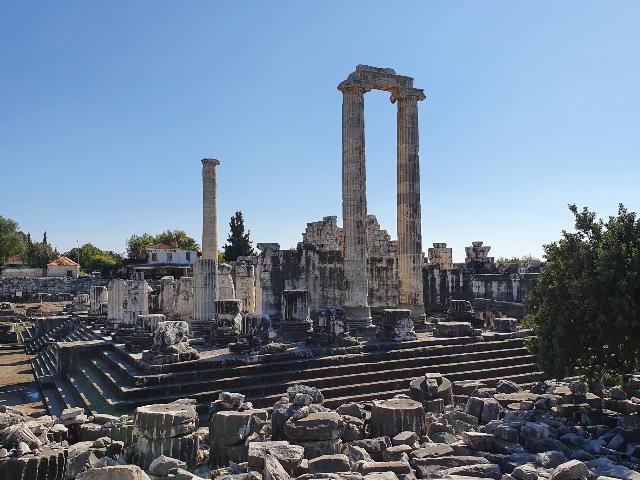As you would imagine, I was early to the Apollo Temple the day after last Friday’s lethal earthquake to inspect any damage that may have occurred to this unique structure of antiquity, writes Glenn Maffia.

Obviously, my first reference was to confirm the iconic columns continued to be in situ, and not condemned to be littering the surrounding ground as so many of their former adjoining partners now do so. No fear there, they continue to stand proud.
Convulsions of the past
The Temple of Apollo has withstood so many shuddering quakes throughout its history and it is testament to the engineering skill of the ancient Greeks and Romans that we are still privileged to be graced by this magnificent echo into our human past.
An Italian traveller, Cyriacus di Ancona (1391-1452), reported that he saw the Temple mostly still standing during his visit in 1446, though by the end of that century another Italian traveller noted that it had been reduced to rubble. By that I presume he meant most of the columns had fallen, though the stylobate, the platform on which the temple stands, was, and is, still remarkably intact but merely buried from his view.
Even the 6.8 magnitude quake which shook the region (epicentre near to Soke) on 6 July 1955, which destroyed the old village surrounding the Temple, could not dislodge the three standing columns, whilst the stylobate appears quite impervious to any form of destruction.
Peripheral damage
This latest quake was of similar strength, though upon my walk around the periphery of the temple some of the dilapidated shells of buildings destroyed in the 1955 earthquake, to my surprise, were still standing; in an almost arrogant distain of all that nature could throw at them.

Though it is within close proximity to these stubborn shells of houses that I did find an inanimate victim to the latest shaking of the earth; a section of the perimeter wall erected by the Wiegand expedition during the early 1900s. Not a massive destruction, but I wouldn’t want to have been walking past it when it toppled onto the public walkway adjacent to the wall.

This section, I felt, had always been a danger as the angle of inclination was markedly oblique. I recalled that the archaeologists had brought with them one digging season, perhaps eight years ago, an architect from Germany. I followed them with some interest. It is with complete clarity that I remember the archaeologists (and I know them all) stopping at this precise point and one of them indicating to the architect the precarious angle of the wall.
A discussion entailed which I could not fathom, due to my lack of the German language, but I did catch one of the archaeologists having a beer nearby a little later. Naturally, I enquired about the nature of their conversation on this section of the perimeter wall.
It was relayed to me that this section concerned one of the archaeologists also, but that this eminent German architect had blithely waved away this worry with a disdainful, “No problem, everything is fine”. I can only surmise, but possibly they do not receive too many 6.8 magnitude earthquakes in Germany.

Therefore, thankfully not any significant damage to the magnificent emblem which defines our town as a unique place upon this ever shifting, ever shaking planet.
